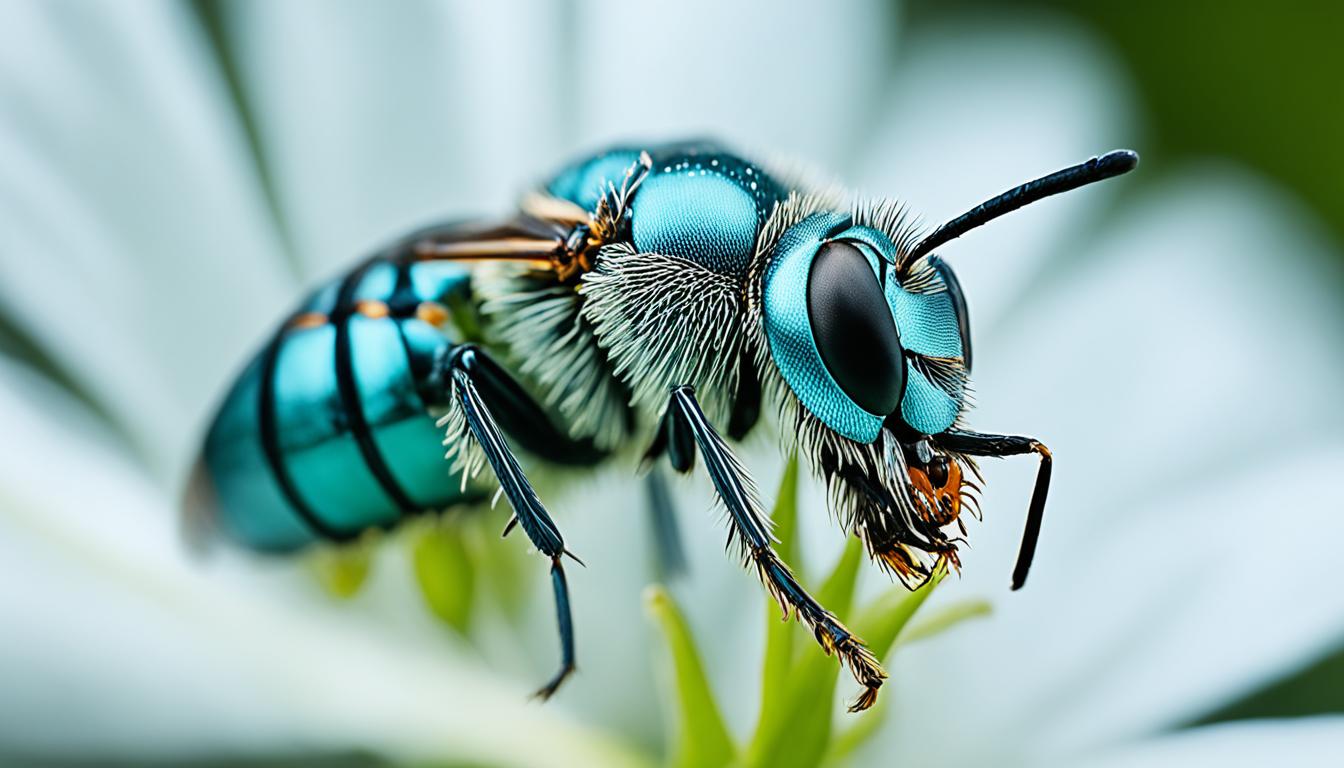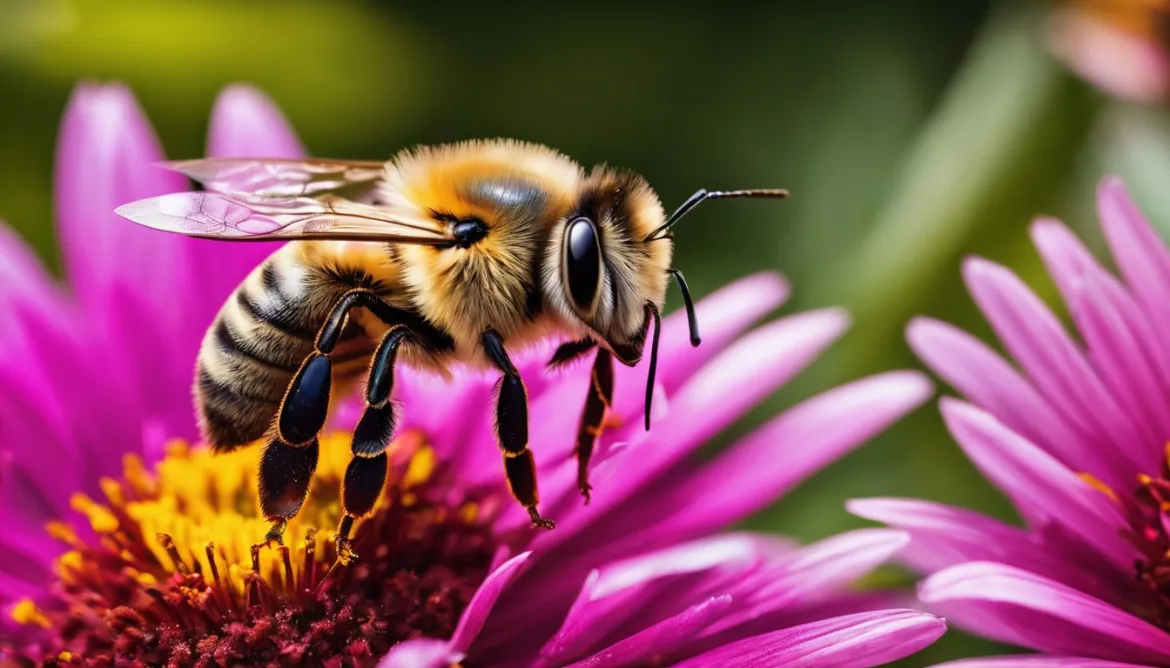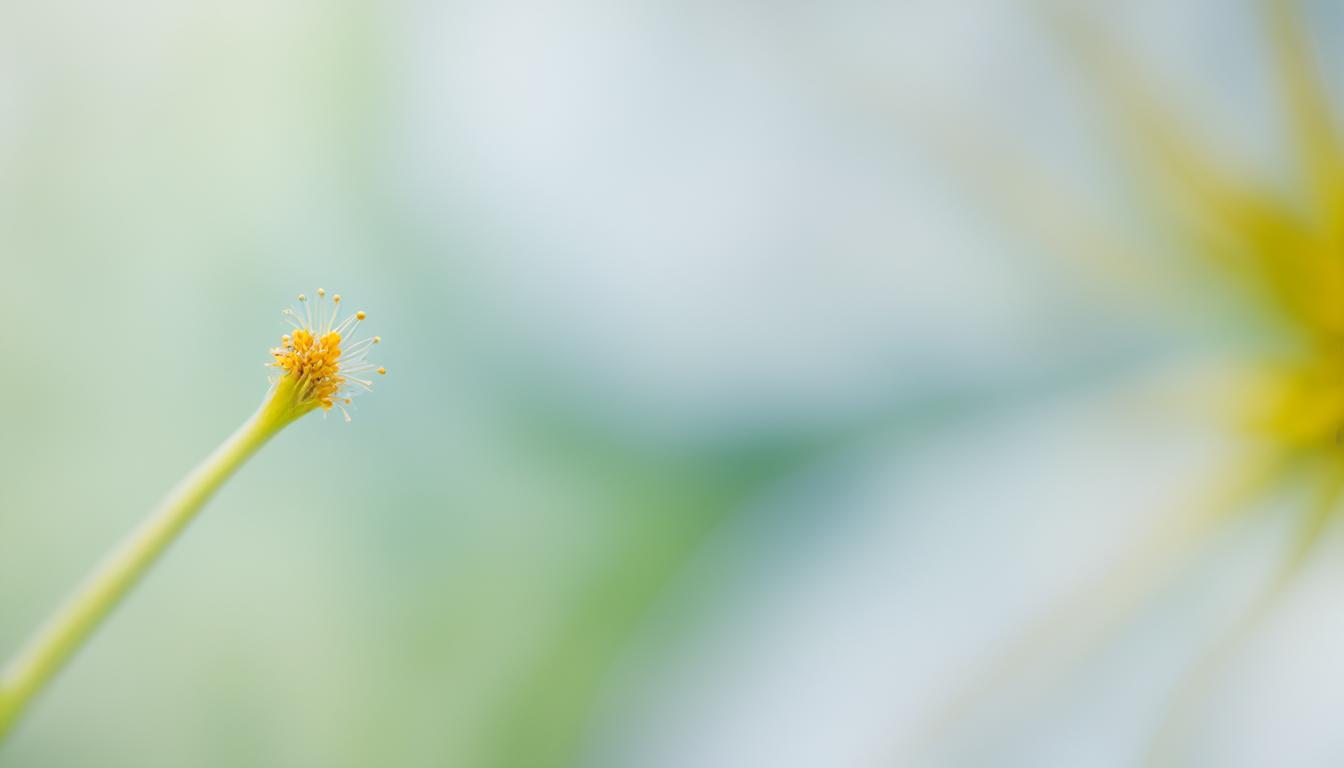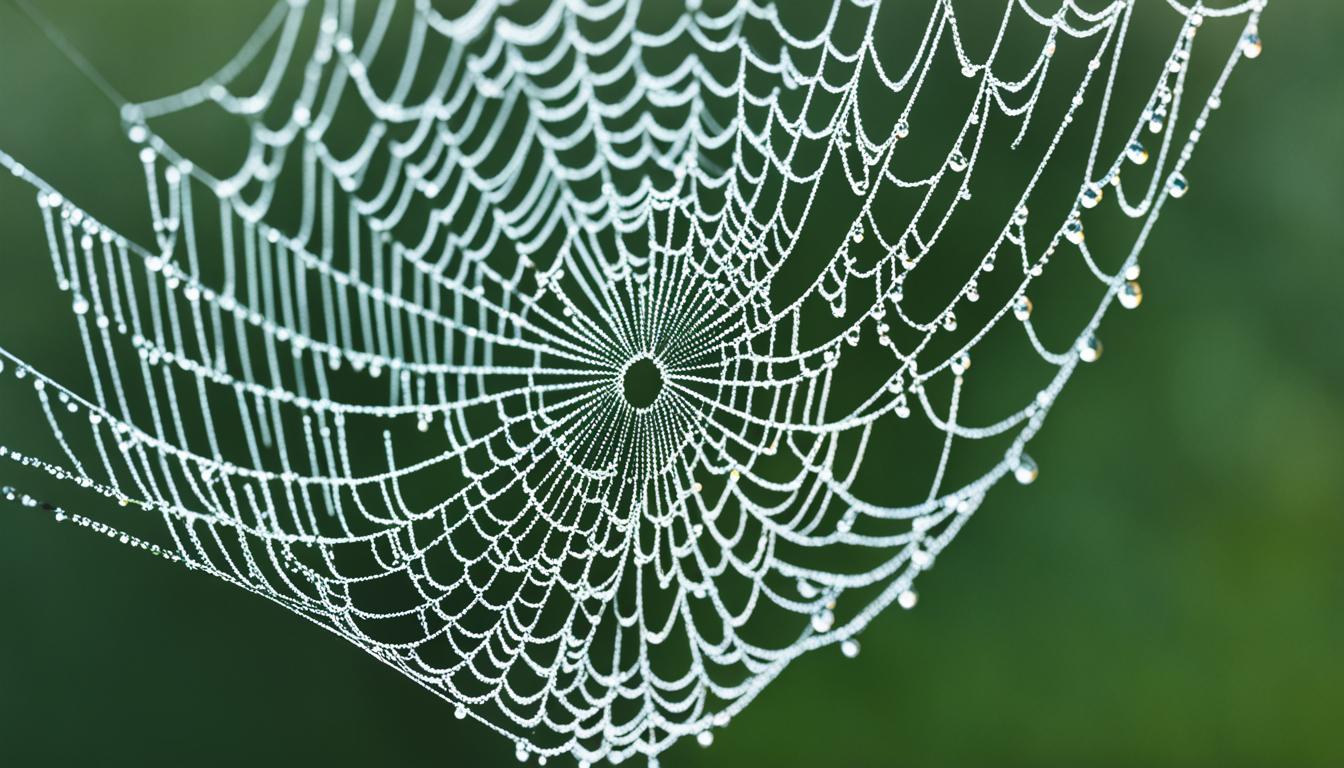Are you interested in capturing stunning close-up photos without the hassle of setting up a tripod? We’ve got you covered with our essential tips for handheld macro photography. While using a tripod is ideal for achieving sharpness, it may not always be practical, especially when shooting in the field or on the go. By mastering the techniques and utilizing the right equipment, you can take your macro photography to the next level and capture incredible images without the need for a tripod.
Before diving into the tips, let’s briefly touch on the challenges of handheld macro photography. Shooting macro subjects without a tripod presents unique difficulties. The lack of control over subject placement and stabilization can make it challenging to achieve sharpness. However, with the right approach and techniques, you can overcome these challenges and capture impressive handheld macro shots.
Key Takeaways:
- Use modern cameras and macro lenses with advanced stabilization capabilities for capturing sharp handheld shots.
- Experiment with camera settings such as aperture priority mode, fast shutter speed, and ISO adjustment for optimal results.
- Approach macro subjects with care, utilizing slow movements and patience to capture them in their natural habitats.
- No matter which focusing method you choose (autofocus or manual focus), ensure accurate focus placement parallel to the subject.
- Control lighting and exposure by using a camera-mounted light source and shooting in RAW format to have more flexibility in post-processing.
Why Handheld Macro Photography is Challenging
Handheld macro photography presents unique challenges compared to shooting in a controlled studio setting. In the field, you need to be adaptable and make quick adjustments to capture stunning close-ups without the aid of a tripod. Without the ability to control subject placement and stabilization, achieving sharpness can be difficult.
When shooting handheld macros, factors such as camera shake, limited depth of field, and capturing fast-moving subjects can pose difficulties. However, with the right techniques and equipment, you can overcome these challenges and capture impressive handheld macro shots that showcase the intricate details of the miniature world.
“The lack of control over subject placement and stabilization makes handheld macro photography a challenging endeavor. However, with the right techniques and equipment, you can overcome these challenges and capture impressive handheld macro shots.”
Difficulties of Shooting Macro Without a Tripod
Shooting macro without a tripod introduces several challenges:
- Camera Shake: Holding the camera steady becomes crucial in achieving sharp focus at close distances. Even the slightest movement can result in blurred images.
- Shallow Depth of Field: Macro photography typically involves a shallow depth of field, making it challenging to keep the subject entirely in focus.
- Subject Movement: Insects and other macro subjects often move quickly. Without the stability provided by a tripod, freezing their motion becomes more challenging.
Overcoming these difficulties requires mastering handheld techniques, understanding your camera’s capabilities, and using appropriate equipment to stabilize your shots. With practice and perseverance, you can capture stunning macro photographs that showcase the intricate details of the miniature world.
| Challenges | Difficulties |
|---|---|
| Camera Shake | Unwanted movement due to handholding |
| Shallow Depth of Field | Narrow focus zone, limited subject sharpness |
| Subject Movement | Fast-moving subjects, difficulty capturing in focus |
Camera Settings for Handheld Macro Photography
When it comes to handheld macro photography, there is no one-size-fits-all camera setting. The ideal settings will depend on various factors such as the subject, magnification level, lighting conditions, and desired results. However, there are some general guidelines to follow to enhance the quality of your macro shots.
Aperture Priority Mode
One of the essential settings for handheld macro photography is using aperture priority mode. This mode allows you to control the depth of field, which is crucial for macro photography. Opt for a large aperture, such as f/5.6 or f/8, to create a shallow depth of field and isolate your subject. This will help in achieving that beautiful background blur, making your subject stand out.
Shutter Speed
To minimize motion blur and ensure sharp images, it is important to use a fast shutter speed. Aim for a minimum shutter speed of 1/250th second or faster to freeze any movement. This will help you capture the intricate details of your subject without any blurriness caused by camera shake or subject movement.
ISO Sensitivity
While it’s tempting to use flash in low light conditions, adjusting the ISO sensitivity is a preferred option for handheld macro shooting. By increasing the ISO, you can maintain a fast shutter speed without relying on flash, which can often produce harsh lighting and unwanted shadows. Experiment with different ISO settings to find the balance between minimizing noise and capturing a well-exposed image.
Remember, photography is an art, and these are just starting points to help you get the best results. As you gain more experience, don’t be afraid to experiment and adjust these settings based on your specific shooting conditions and creative vision. The key is to practice and refine your technique to capture stunning handheld macro shots.
Approaching Macro Subjects
Getting close to macro subjects, especially insects, can be challenging. Insects are often timid and easily startled, making it difficult to get a clean shot. But fear not! We have some valuable tips to help you approach macro subjects effectively and capture stunning close-ups.
Move Slowly and Be Observant
The key to getting close to macro subjects is to move slowly and quietly. Sudden movements can startle the insects and cause them to fly away or hide. Take your time to observe their behavior and identify their habits.
Explore Their Natural Habitats
Insects are more likely to be approachable in their natural habitats. Look for macro subjects in wetlands, heathland, woodlands, and wildflower meadows. These environments provide ample opportunities to find interesting and diverse subjects.
Exercise Patience
Patience is a virtue in macro photography. Wait for the subject to settle in a favorable position before approaching. Observe their movements and anticipate their behavior to capture the perfect moment.
Utilize Longer Focal Lengths
Using longer focal lengths allows you to maintain a safe distance from the subject while still capturing intimate details. Telephoto lenses or macro lenses with greater reach can help you get close without disturbing the subject.
Avoid Sudden Movements
Any sudden movement can cause insects to flee. Be mindful of your body language and avoid abrupt gestures. Make slow and deliberate movements to minimize disturbances and increase your chances of getting close.
By following these tips, you’ll be able to approach macro subjects with confidence and capture captivating images of the miniature world. Take your time, be patient, and immerse yourself in the wonders of macro photography.
| Tips for Approaching Macro Subjects |
|---|
| Move slowly and quietly to avoid startling the subjects. |
| Explore natural habitats where macro subjects can be found. |
| Exercise patience and wait for the perfect moment to approach. |
| Utilize longer focal lengths to maintain a safe distance. |
| Avoid sudden movements to minimize disturbances. |
Focusing in Handheld Macro Photography
Achieving sharp focus is essential when capturing handheld macro shots, especially considering the shallow depth of field at higher magnifications. In order to achieve precise focus, there are two common approaches – autofocus and manual focus.
Autofocus is a convenient option for many photographers, as it allows the camera to automatically adjust the focus based on the chosen AF point. When shooting handheld macro photos, it is often recommended to use a single AF point and select the desired focal point, typically the subject’s eyes. This ensures that the most important part of the image is in sharp focus.

On the other hand, some photographers prefer manual focus, particularly when dealing with higher magnification levels. Manual focus provides greater control over the area of focus, allowing for precise adjustments to capture the desired level of detail. It can be challenging to get the focus exactly right, especially when working with small subjects and shallow depths of field, but practice and patience can lead to rewarding results.
Regardless of the chosen focusing method, it is crucial to position the camera parallel to the subject. This helps ensure that the area of focus aligns with the plane of the subject, resulting in sharper images with the desired level of detail.
One helpful technique to improve focus acquisition in handheld macro photography is to utilize back button focus. This allows for quick and easy separation of focus and shutter functions by assigning autofocus control to a button on the back of the camera. By separating these functions, it becomes easier to switch from autofocus to manual focus without having to make menu adjustments. This can be particularly valuable when shooting subjects that are constantly moving and require quick adjustments to maintain focus.
To summarize, achieving sharp focus in handheld macro photography requires careful consideration of focusing methods. Whether you prefer autofocus or manual focus, it is important to position the camera correctly and pay attention to focusing accuracy. With practice and experimentation, you can capture stunning macro shots with impeccable focus and detail.
Controlling Lighting and Exposure in Handheld Macro Photography
When it comes to handheld macro photography, controlling lighting and exposure is essential for capturing stunning images. The lighting conditions can often be challenging, especially when relying on natural light. To overcome these challenges and have more control over your shots, consider the following techniques:
- Using Flash: When shooting handheld macro photos, using a camera- or lens-mounted flash can provide you with additional light sources. This allows for accurate exposure adjustments on the fly and helps illuminate your subjects, enhancing the overall image quality. Experiment with different flash angles and diffusers to achieve the desired lighting effects.
- Shooting RAW: Shooting in RAW format offers numerous advantages for macro photography. RAW files contain more data and provide greater flexibility in post-processing, allowing you to adjust exposure, white balance, colors, sharpening, and noise reduction with precision. This is particularly beneficial when faced with challenging lighting conditions or when trying to capture subtle details in your macro images.
- Adjusting Exposure: To ensure proper exposure in your macro images, pay attention to the histogram on your camera’s display. If the histogram is skewed to the left, it indicates underexposure, while a histogram skewed to the right suggests overexposure. Adjust the exposure compensation to achieve a well-balanced histogram and maintain the details and tonal range in your shots.
“Controlling lighting and exposure is crucial in handheld macro photography for achieving well-lit and properly exposed images.”
By implementing these techniques and using flash, shooting RAW, and adjusting exposure, you can have better control over the lighting and exposure in your handheld macro photography. This will ultimately result in more visually appealing and impactful macro images that showcase the intricate details of your subjects.
| Technique | Advantages |
|---|---|
| Using Flash |
|
| Shooting RAW |
|
| Adjusting Exposure |
|
Tips for Sharp Images in Handheld Macro Photography
Getting sharp images in handheld macro photography requires precision and patience. To help you capture sharp shots, we have compiled a list of valuable tips:
- Control the light: Using a mounted flash allows for better exposure control, resulting in sharper images. Adjust the flash output to achieve the desired lighting for your subjects.
- Shoot in RAW format: By shooting in RAW, you have more flexibility in post-processing. RAW images retain more detail and allow for adjustments in exposure, white balance, and sharpening, enhancing the overall sharpness of your macro shots.
- Utilize back button focus: Assigning the focus activation to a dedicated button on the back of your camera allows for quick focus acquisition. This technique ensures that you maintain sharp focus on your subjects, even during dynamic shooting situations.
- Opt for a smaller aperture: Choosing a smaller aperture (higher f-number) increases the depth of field, resulting in more of your subject being in focus. However, be mindful of the trade-off with diffraction, where very small apertures can reduce overall sharpness.
- Support your camera: Minimize camera shake by using proper handholding techniques or supporting your camera with a tripod or a monopod. This stability helps to reduce blur and increases the chances of capturing sharp handheld macro shots.
- Keep shooting and take multiple shots: Increase your chances of getting a sharp image by taking multiple shots. The tiny movements that occur during handheld macro photography can introduce slight blurring, so capturing several frames increases the probability of obtaining a sharp image.
- Slow down and be patient: Macro photography is about observing the intricate details of the miniature world. Take your time, observe your subjects, and allow yourself to capture the beauty of the macro world with precision and patience.
By following these tips, you can maximize the sharpness in your handheld macro shooting and capture stunning close-up images that showcase the amazing details of the macro world.
Tips for Approaching Macro Photography Subjects
When it comes to macro photography, successfully approaching your subjects can make all the difference in capturing captivating shots. Here are some tips and techniques to help you get close to macro subjects:
Select Promising Locations
Increase your chances of finding subjects by choosing promising locations or specific habitats. Explore areas such as wetlands, woodlands, and wildflower meadows, as they often provide a rich diversity of macro subjects.
Get Down on Your Hands and Knees
Explore the macro world at ground level by getting down on your hands and knees. This perspective allows you to discover unique angles and interesting compositions while immersing yourself in the miniature beauty of the macro world.
Uncover Hidden Opportunities
Gently turn over fallen leaves and branches to uncover hidden opportunities. Many macro subjects, such as insects and small creatures, often seek shelter and camouflage beneath natural debris, offering intriguing photo opportunities.
Look Underneath Vegetation
Don’t forget to explore the underside of vegetation, such as leaves and flowers. Many macro subjects, including insects and spiders, can be found hidden on the undersides of leaves or nestled within the petals of flowers.
Move Slowly and Deliberately
Approach your subjects with slow and deliberate movements to avoid startling them. Sudden movements can cause macro subjects to flee or hide, making it challenging to capture the perfect shot. Take your time, be patient, and let the macro world unfold naturally.
Be Patient and Capture the Unique
In macro photography, patience is key. Take your time to observe and wait for the perfect moment to capture something unique and captivating. Often, the most remarkable macro shots are the result of patience and persistence.
| Tips for Approaching Macro Photography Subjects |
|---|
| Select promising locations or specific habitats to increase your chances of finding subjects. |
| Get down on your hands and knees to explore the macro world at ground level. |
| Gently turn over fallen leaves and branches to uncover hidden opportunities. |
| Look for subjects on the underside of vegetation. |
| Use slow and deliberate movements to avoid startling your subjects. |
| Take your time and be patient to capture unique and captivating macro shots. |
Importance of Persistence in Handheld Macro Photography
When it comes to handheld macro photography, persistence plays a crucial role in capturing great shots. It’s not uncommon to discard numerous images before finally achieving a few sharp and captivating photographs. But what does persistence entail in this context?
Being persistent in handheld macro photography means continually experimenting with different angles, adjusting flash and aperture settings, and exploring various compositions. It’s about pushing boundaries and consistently challenging yourself to capture that one remarkable image.
Patience is key in this pursuit. Instead of becoming discouraged by initial unsuccessful attempts, embrace the learning process. Understand that achieving stunning macro shots through handheld techniques requires time and dedication.
“Persistence involves continuously trying different angles, adjusting flash and aperture settings, and experimenting with compositions.”
By persistently adjusting your approach, you increase your chances of achieving outstanding results. Don’t be afraid to take multiple shots, each with a slightly different focus or composition. This experimentation allows you to refine your technique and discover what works best for each unique macro subject.
Remember, the beauty of handheld macro photography lies in the freedom it provides. Without the constraints of a tripod, you have the flexibility to explore and capture macro subjects in their natural environments. Embrace the process, be patient, and let persistence guide you towards capturing awe-inspiring macro shots.

The Beauty of Handheld Macro Photography
Handheld macro photography offers a sense of freedom and spontaneity that can result in unique and stunning images. The ability to shoot on the go without the need for tripods allows us to explore and capture macro subjects in their natural environments.
The close-up details that handheld macro photography reveals can unveil the intricate beauty of the miniature world, providing a different perspective and showcasing the wonders of nature.
| Advantages of Handheld Macro Photography | Freedom of Handheld Macro Shooting |
|---|---|
|
|
Conclusion
Handheld macro photography can be a challenging yet rewarding genre that allows you to capture stunning close-up shots with the freedom to explore and be spontaneous. By implementing the right techniques and equipment, you can overcome the difficulties of shooting macro handheld and achieve sharp and captivating images.
Controlling your camera settings is key to achieving optimal results. Utilize aperture priority mode with a larger aperture to control depth of field and a fast shutter speed to minimize motion blur. Adjusting ISO speed in low light conditions and shooting in continuous burst mode can help you capture sharp images.
Approaching subjects carefully and with patience is crucial. Move slowly, be observant, and take advantage of promising locations and habitats. Remember to use techniques like back button focus and ensure proper focusing accuracy by positioning your camera parallel to the subject.
Lastly, proper lighting and exposure control play a vital role. Consider using a mounted light source or flash for more controlled lighting. Shooting in RAW format provides flexibility in post-processing to make adjustments and enhance your images.
So, armed with these tips and a spirit of persistence, venture into the captivating world of handheld macro photography. Embrace the beauty of miniature details and let your creativity shine through.
FAQ
What are some tips for handheld macro photography?
Some tips for handheld macro photography include using a smaller aperture, shooting in RAW format, utilizing back button focus, and supporting your camera to minimize camera shake.
How can I approach macro subjects in handheld photography?
To approach macro subjects in handheld photography, you can select promising locations, get down on your hands and knees, turn over fallen leaves and branches, and use slow and deliberate movements to avoid startling your subjects.
How can I achieve sharp focus in handheld macro photography?
Achieving sharp focus in handheld macro photography can be done by using manual focus or autofocus with a single AF point. It is important to position the camera parallel to the subject and pay attention to focusing accuracy.
How can I control lighting and exposure in handheld macro photography?
To control lighting and exposure in handheld macro photography, you can use a mounted flash or continuous light source, shoot in RAW format for more flexibility in post-processing, and make exposure adjustments on the fly.
What are some tips for capturing sharp images in handheld macro photography?
Some tips for capturing sharp images in handheld macro photography include controlling the light using a mounted flash, shooting in RAW format, utilizing back button focus, using a smaller aperture, supporting your camera, and taking multiple shots.
How can I approach macro photography subjects successfully?
To approach macro photography subjects successfully, you can select promising locations, get down on your hands and knees, turn over fallen leaves and branches, look for subjects on the underside of vegetation, and use slow and deliberate movements.
How important is persistence in handheld macro photography?
Persistence is crucial in handheld macro photography as it often takes multiple attempts and adjustments to capture great macro shots. By continuously trying different angles, adjusting settings, and experimenting with compositions, you increase your chances of capturing a remarkable image.
Why is handheld macro photography beautiful?
Handheld macro photography offers a sense of freedom and spontaneity that can result in unique and stunning images. It allows photographers to explore and capture macro subjects in their natural environments, revealing the intricate beauty of the miniature world and showcasing the wonders of nature.
How Can I Use Handheld Techniques for Macro Photography of Everyday Objects?
Capturing vivid details of everyday objects is possible with the right macro photography tips for everyday objects. Handheld techniques allow for flexibility and creative angles. Ensure proper lighting, use a tripod for stability, and experiment with different perspectives to bring out the essence of your subject.




